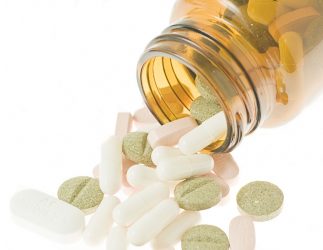Latest innovations in child-resistant pharmaceutical packaging
Posted: 29 April 2020 | Rich Quelch (Origin) | No comments yet
The problem of children accessing medication at home is growing and the UK’s National Health Service (NHS) claims the most common form of poisoning1 in the UK is from medication, with children under five being most at risk. While parents have a role to play in the home by keeping medicine out of sight and reach, the pharma industry has a responsibility to invest in packaging products that act as the first line of defence. Here, Rich Quelch explores the pressures on the pharma industry to meet ethical standards and assesses how the latest innovations in child-resistance packaging are helping to shape a safer future.


An ethical requirement
For many businesses, meeting baseline safety standards is key, as it helps get their products on store shelves or in pharmacies as quickly as possible. However, for most industries the risks that come with underdeveloped products are not as severe as for those in pharma. For companies bringing new drugs to market, leniency towards safety standards, for both primary and secondary packaging, could have serious, if not fatal, repercussions.
European packaging manufacturers are currently required to meet several standards for child safety, including regulations on reclosable and non-reclosable packaging for medicines.2 Even for those already meeting minimum regulation standards, it begs the question of why manufacturers are not pushing themselves to meet a higher standard of social responsibility to ensure products do not pose a risk to the population, especially children. For those currently meeting child-resistant guidelines, there is no reason why they cannot go above and beyond to lead the way in safety standards.
Expectations are also increasing in terms of child protection; acceptable extraction levels for solid dose medication are being challenged, and rightly so. If some are achieving results of F4 to F1, then why should F8 be considered acceptable? Brands have much to gain – ethically and commercially – by blazing the trail for child-resistant packaging. For those able to rise to the challenge, it represents an opportunity to beat the competition and set the new standard in child-resistant packaging.
Fighting the fakes
Falsified medicine is one of the biggest challenges facing today’s global pharmaceutical industry, with the false medicines market estimated to be worth approximately $200 billion.3 Unregulated products are flooding the pharma market and posing serious health risks to patients globally.
European packaging manufacturers are currently required to meet several standards for child-safety, including regulations on reclosable and non-reclosable packaging for medicines”
Criminal manufacturers of fraudulent medicines have no responsibility to ensure their products adhere to safety regulations, including packaging. This means consumers are left with no protection in terms of child resistance.
The fight against false medical products escalated last year as the EU rolled out its Falsified Medicines Directive (FMD) in February. The legislation means all prescription medicines will need to include two safety features on its packaging: an anti-tampering device and a unique identifier in the form of a 2D barcode.
Anti-tampering features mean any products that may be compromised will not be sent to pharmacies or consumers, limiting unsafe or damaged packaging in the home. Similarly, tracking products with barcode technologies means batches of products are ‘checked out’ by the manufacturer and then ‘scanned in’ at the point of dispensing (eg, pharmacy), ensuring all product journeys are authenticated and products (and therefore, packaging) are legitimised.
However, many medical products are not compliant to the new EU regulations and it will take a while before we can assess the effect of the legislation. However, as regulation continues to support efforts to eradicate falsified and counterfeit medicine, patient and child safety will increase.
Design innovation


Innovative blister packaging works on the same premise of requiring mature motor functions. While foil blister tabs are perforated and do not require much strength to pierce, they still demand dexterity to secure the package and break the blister seal to retrieve the medicine. It means modern blister packaging is suitable for the elderly or frail but keeps medicine out of the hands of small children.
The original and standard-setting child-resistant design has always been the twist-off bottle cap, which demands a pinch-and-twist movement to access the medicine and therefore exceeds child motor capabilities. Twist-off caps continue to be the market leader but as manufacturers compete to provide the most effective and sustainable solution, we are seeing innovations in this design. Modified designs include caps that integrate measuring beakers and use sustainable materials.
Packaging manufacturers also have a duty to label child-resistant packaging4 clearly for consumers. This includes using complete terms like ‘child-resistant packaging’ rather than abbreviations and including the information in a specified place – the ‘how supplied/storage and handling section’ of the label. Separate adhesive labels are seen as best practice compared with on-packaging designs.
A forward glance
The importance of child-resistant packaging and the demand for safe products is not a new phenomenon. The child-resistant packaging market continues to evolve as competing brands look to provide the safest and most efficient solution. One major driver of this recent market growth is the expanding offering of cannabis-based products. With the introduction of oils, creams and other CBD products on shelves, renewed efforts are being made to ensure the safety of children in the home. As mentioned earlier, ziplock bags and pouches ensure a safe secondary packaging solution, and focus is heavily weighted on providing that first barrier of defence to the medicine.
Packaging manufacturers also have a duty to label child-resistant packaging clearly for consumers”
Dark colours, like amber glass, are a popular choice for oil products, acting as a suitable platform for labelling products. Oil products are typically dispensed via a pipette-style ‘dropper’ and manufacturers are innovating the dropper design to integrate the two-motion pinch-and-twist cap mechanism in a way that prevents child access without compromising the efficiency of the system. Child-resistant vials pose fewer challenges to manufacturers and the market is opting for opaque, plastic designs with standard pinch-and-twist caps to provide a child-resistant barrier.
Looking forward, the demand for child-resistant packaging is expected to grow,5 with focus shifting towards non-reclosable designs. Non-reclosable products provide the peace of mind of offering a higher level of protection to the medicine with a longer shelf life.
In the future, those companies that consider child safety regulations as simply a minimum bar to exceed will be the ones that thrive. Those who adopt child safety as a genuine part of their ethos and work to raise the bar will reap the benefits of today’s conscious consumers, who continue to demonstrate value in ethical responsibility in their purchasing habits.
About the author
Rich Quelch has worked with experts in the healthcare and pharmaceutical sector for almost 10 years. As part of his current role with Origin, Rich aims to raise awareness amongst the pharma community about key issues facing the sector, including increasing sustainability across the supply chain, the latest tamper-proof technologies and innovations in child-resistant primary packaging.
References
- https://www.nhs.uk/conditions/poisoning/prevention/
- https://www.originltd.com/packaging-design/child-resistantpackaging/
- https://www.ft.com/content/7027df4e-d67a-11e7-8c9ad9c0a5c8d5c9
- https://www.fda.gov/media/106673/download
- https://www.marketwatch.com/press-release/childresistant-packaging-market-future-trends-competitiveanalysis-and-segments-poised-for-strong-growth-infuture-2023-2018-05-09









